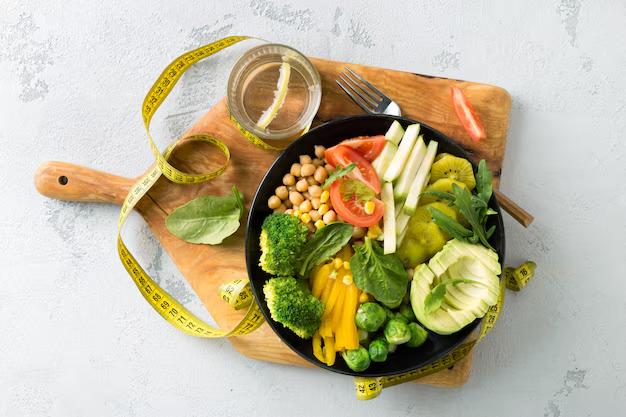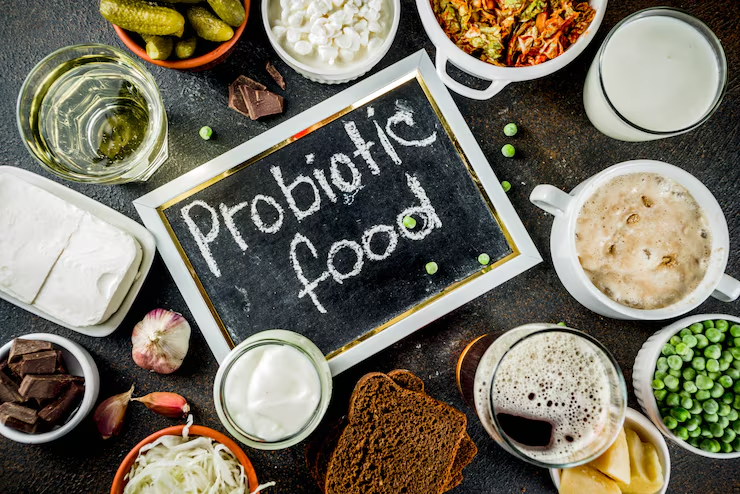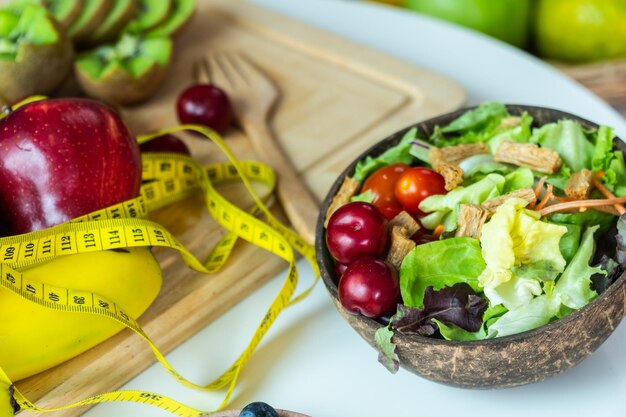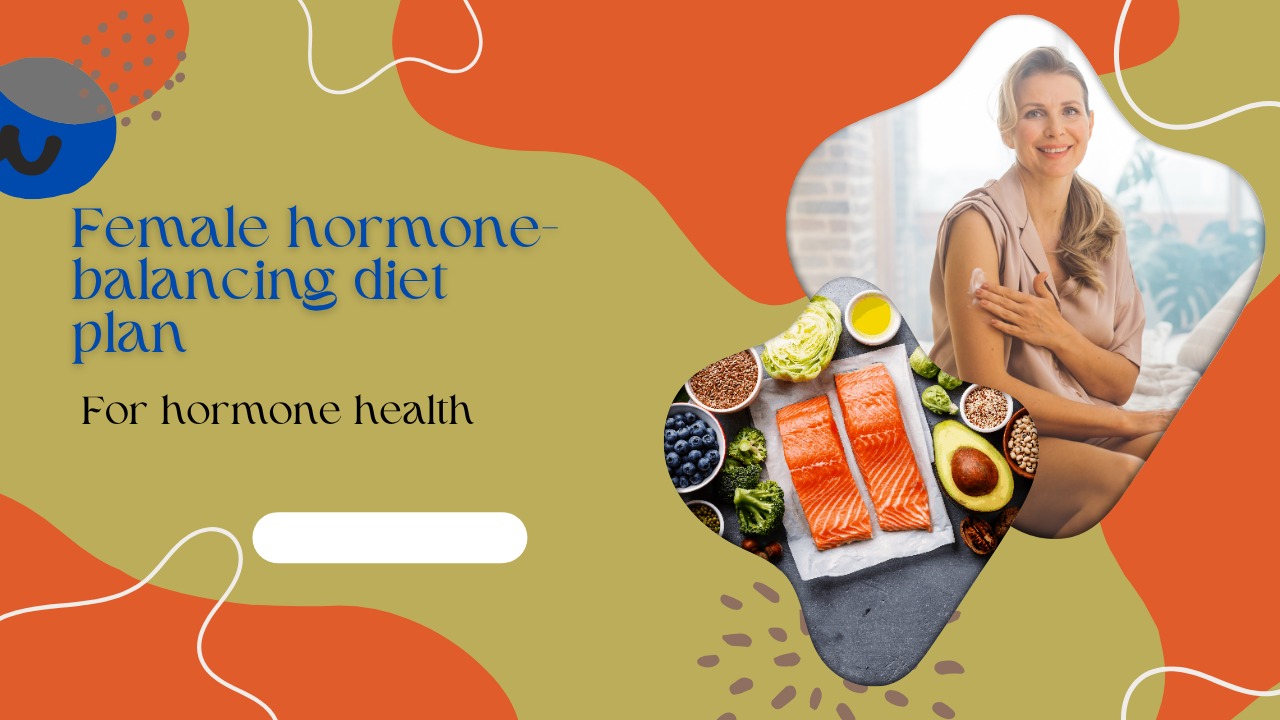Hormones are chemical messengers that regulate nearly every function in a woman’s body, including metabolism, sleep, mood, fertility, weight, and skin health. When hormones become imbalanced, they can disrupt physical, mental, and emotional well-being. Fortunately, a female hormone-balancing diet plan can help restore harmony naturally.
This guide dives into the role hormones play, how they are produced, and the common causes of hormonal imbalances. By understanding these factors, you can take control of your health through mindful dietary choices that support hormone balance.
We’ll cover the eight most effective tips to create a balanced female hormone-balancing diet plan, focusing on foods that nourish and regulate hormones. Plus, you’ll find answers to frequently asked questions to help you better understand and manage your hormonal health for improved vitality and well-being.

What Are Hormones & What Do They Do ?
Hormones are chemical messengers produced by glands in the endocrine system that regulate many vital functions in a woman’s body. They control everything from metabolism and mood to reproductive health and sleep patterns. Maintaining proper hormone balance is essential for overall well-being.
A well-structured female hormone-balancing diet plan supports the body’s ability to produce and regulate these hormones effectively. By providing essential nutrients like healthy fats, vitamins, and minerals, the diet helps optimize hormone function and maintain stable levels throughout the menstrual cycle and beyond.
Hormones work together in a complex system to keep the body functioning smoothly. When this balance is disrupted, symptoms like fatigue, mood swings, and weight changes can occur. Incorporating a balanced female hormone-balancing diet plan helps support this delicate system, promoting hormonal harmony and better health naturally.
Hormones are biochemical messengers secreted by glands in the endocrine system, including the ovaries, pituitary gland, thyroid, pancreas, and adrenal glands. They travel through the bloodstream to tissues and organs, controlling processes such as:
Reproduction and menstrual cycles
Energy production and metabolism
Mood and brain function
Skin and hair health
Appetite and cravings
Sleep cycles
Hormone Formation
Hormones are formed from proteins or cholesterol, depending on the type. For example:
Steroid hormones (like estrogen, progesterone, and cortisol) are synthesized from cholesterol in the adrenal glands and ovaries.
Peptide hormones (like insulin and leptin) are made from amino acids in the pancreas and fat cells.
A proper nutrient intake—such as healthy fats, vitamins, and minerals—is essential for hormone production.
Why Do Hormonal Imbalances Occur in Women ?
Hormonal imbalances in women can occur due to various factors, including stress, poor diet, lifestyle habits, and underlying health conditions. When the body’s delicate hormone system is disrupted, it can lead to symptoms like mood swings, fatigue, irregular periods, and weight changes.
One common cause of hormonal imbalance is chronic stress, which increases cortisol levels and affects the balance of reproductive hormones. Additionally, diets high in processed foods, sugar, and unhealthy fats can worsen imbalances by promoting inflammation and insulin resistance. This is why following a female hormone-balancing diet plan that emphasizes whole, nutrient-rich foods is vital for restoring harmony.
Other factors such as aging, thyroid issues, and environmental toxins also play a role. A well-rounded female hormone-balancing diet plan combined with lifestyle changes can help manage these influences, supporting the body’s ability to regulate hormones naturally and improve overall health.
Hormonal imbalances happen due to multiple lifestyle, genetic, and environmental factors. These include:
Poor diet (high sugar, processed foods)
Chronic stress
Birth control pills or hormone therapy
Sleep disturbances
Toxins and endocrine disruptors (e.g., plastics, pesticides)
Menopause, PCOS, or thyroid disorders
Symptoms of imbalance may include:
Irregular periods or PMS
Weight gain (especially belly fat)
Mood swings, anxiety, or depression
Low libido
Fatigue or insomnia
Hair thinning or acne
How Diet Affects Female Hormones
Diet plays a crucial role in regulating female hormones, making nutrition a key factor in maintaining hormonal balance. A well-designed female hormone-balancing diet plan focuses on providing the nutrients needed to support hormone production, metabolism, and detoxification.
Foods rich in healthy fats, fiber, vitamins, and minerals help stabilize blood sugar levels and reduce inflammation, both of which are essential for hormone regulation. Conversely, diets high in processed foods, sugar, and unhealthy fats can disrupt hormone balance, leading to issues like mood swings, weight gain, and irregular cycles.
By following a thoughtful female hormone-balancing diet plan, you support your body’s natural hormone rhythms and improve overall well-being. Choosing whole, nutrient-dense foods empowers your body to produce and regulate hormones efficiently, helping to alleviate symptoms associated with hormonal imbalances and promote lasting health.
Foods That Help:
Healthy fats (avocados, nuts, seeds)
Cruciferous vegetables (broccoli, kale)
High-fiber fruits
Fermented foods (kimchi, yogurt)
Omega-3s (salmon, flaxseeds)
Foods to Avoid:
Refined sugar
Processed meats
Trans fats and seed oils
Caffeine and alcohol (excessive amounts)
Dairy (in sensitive individuals)
Top Hormone-Balancing Diet Tips for Women
Let’s dive into the most effective, research-backed diet strategies to balance your hormones naturally:
Prioritize Healthy Fats

Prioritizing healthy fats is essential in a female hormone-balancing diet plan because fats are the building blocks of hormones. Healthy fats support the production and regulation of key hormones such as estrogen, progesterone, and testosterone, which are vital for overall hormonal balance and reproductive health.
Incorporate sources of healthy fats like avocados, nuts, seeds, olive oil, and fatty fish into your female hormone-balancing diet plan. These fats not only help maintain hormone levels but also reduce inflammation and improve brain function. Including them in your diet promotes satiety, stabilizes blood sugar, and supports mood regulation.
By making healthy fats a priority, you provide your body with essential nutrients needed for optimal hormone synthesis and balance. Pairing these fats with a well-rounded female hormone-balancing diet plan enhances your ability to manage hormonal fluctuations naturally and maintain overall health and vitality.
Why: Hormones like estrogen and progesterone are made from cholesterol. Eating healthy fats supports hormone production and reduces inflammation.
Best Ingredients:
Avocados
Extra virgin olive oil
Coconut oil
Chia seeds
Walnuts
Ghee
Benefits:
Supports ovulation and fertility
Reduces PMS symptoms
Enhances skin and hair health
Balances blood sugar
Eat Cruciferous Vegetables Daily
Eating cruciferous vegetables daily is a powerful strategy in a female hormone-balancing diet plan. Vegetables like broccoli, cauliflower, Brussels sprouts, and kale are rich in compounds called glucosinolates, which support liver detoxification pathways responsible for metabolizing excess estrogen.
Including cruciferous vegetables in your female hormone-balancing diet plan helps promote healthy estrogen breakdown and elimination, reducing the risk of hormonal imbalances that can cause symptoms such as mood swings, bloating, and irregular periods. These veggies are also packed with fiber, antioxidants, and vitamins that support overall health and immune function.
Regular consumption of cruciferous vegetables aids in reducing inflammation and supporting a healthy gut, which are both essential for hormone balance. By making these nutrient-dense vegetables a daily part of your female hormone-balancing diet plan, you provide your body with natural tools to maintain hormonal harmony and enhance well-being.
Why: These vegetables contain compounds like indole-3-carbinol that help detoxify excess estrogen via the liver.
Best Ingredients:
Broccoli
Cauliflower
Cabbage
Kale
Brussels sprouts
Benefits:
Clears estrogen dominance
Supports liver detoxification
Helps with PCOS and endometriosis
Improves digestion
Balance Your Blood Sugar
Balancing blood sugar is a crucial aspect of a successful female hormone-balancing diet plan. Stable blood sugar levels help regulate insulin, a hormone that plays a significant role in hormonal health. When blood sugar spikes and crashes occur frequently, it can lead to insulin resistance, which disrupts the balance of other hormones such as estrogen and progesterone.
To maintain balanced blood sugar, focus on eating whole, fiber-rich foods like vegetables, legumes, and whole grains, which slow down sugar absorption. Pairing carbohydrates with protein and healthy fats in your female hormone-balancing diet plan helps prevent sudden blood sugar swings and keeps energy levels steady throughout the day.
In addition to diet, regular physical activity and stress management support healthy blood sugar control. By prioritizing balanced blood sugar in your female hormone-balancing diet plan, you support overall hormonal harmony, reduce cravings, and promote sustained energy and well-being.
Why: Insulin spikes can lead to weight gain, irregular cycles, and increased testosterone in women with PCOS.
Best Practices:
Avoid sugary drinks and processed carbs
Combine carbs with protein and fat
Eat fiber-rich meals
Best Ingredients:
Sweet potatoes
Lentils
Quinoa
Leafy greens
Berries
Benefits:
Prevents energy crashes
Regulates appetite and cravings
Balances insulin and cortisol
Supports thyroid health
Add Adaptogenic Herbs

Adaptogenic herbs are powerful natural allies in a female hormone-balancing diet plan because they help the body manage stress and support hormonal harmony. These herbs work by regulating the adrenal glands, which produce key stress hormones like cortisol that can disrupt the balance of reproductive hormones when elevated.
Incorporating adaptogens such as ashwagandha, maca root, holy basil, and rhodiola into your female hormone-balancing diet plan can reduce stress-related hormone imbalances and improve energy, mood, and resilience. These herbs help stabilize cortisol levels, supporting better sleep and reducing anxiety, which are essential for maintaining healthy hormone cycles.
By adding adaptogenic herbs to your diet and lifestyle, you empower your body to respond more effectively to stress and promote overall hormonal balance. When combined with a nutritious female hormone-balancing diet plan, adaptogens enhance your ability to achieve long-term wellness and vitality naturally.
Why: Adaptogens help your body adapt to stress and reduce cortisol, which can otherwise block progesterone production.
Best Ingredients:
Ashwagandha
Maca root
Holy basil (Tulsi)
Rhodiola
Benefits:
Lowers stress and anxiety
Improves libido and energy
Balances adrenal function
Enhances mental clarity
Focus on Fiber for Estrogen Detox
Fiber plays a vital role in supporting estrogen detoxification, making it a key component of any effective female hormone-balancing diet plan. Dietary fiber binds to excess estrogen in the digestive tract, helping to remove it from the body and prevent hormonal imbalances that can lead to symptoms like mood swings, weight gain, and irregular cycles.
Including high-fiber foods such as fruits, vegetables, whole grains, legumes, and nuts in your female hormone-balancing diet plan supports healthy digestion and efficient elimination of toxins. Soluble and insoluble fibers work together to promote gut health and regulate bowel movements, which is essential for proper hormone clearance.
By prioritizing fiber-rich foods, you not only aid estrogen detox but also improve blood sugar regulation and reduce inflammation. Integrating fiber into your female hormone-balancing diet plan is a natural and powerful way to support hormone balance and overall wellness.
Why: Fiber binds to excess estrogen in the digestive tract and helps flush it out via bowel movements.
Best Ingredients:
Flaxseeds
Apples
Lentils
Oats
Carrots
Benefits:
Reduces bloating and PMS
Clears skin
Supports liver and gut health
Balances mood swings
Include Fermented & Probiotic Foods

Including fermented and probiotic foods is essential for a balanced gut, which plays a crucial role in hormone regulation. A healthy gut microbiome helps break down and eliminate excess hormones, supports digestion, and reduces inflammation—all key factors in maintaining hormonal balance.
Incorporating fermented foods like sauerkraut, kimchi, kefir, and miso into your female hormone-balancing diet plan can enhance gut health by increasing beneficial bacteria. Probiotic-rich foods help improve digestion and nutrient absorption, which supports the body’s ability to regulate hormones effectively.
Adding these foods to your diet not only boosts gut health but also strengthens the immune system and supports mental well-being. Prioritizing fermented and probiotic foods in your female hormone-balancing diet plan helps create a foundation for hormonal harmony and overall health, empowering you to feel your best naturally.
Why: A healthy gut microbiome is essential for hormone metabolism and reducing inflammation.
Best Ingredients:
Sauerkraut
Kimchi
Plain yogurt
Kefir
Miso
Benefits:
Improves digestion and nutrient absorption
Reduces bloating and constipation
Supports estrogen metabolism
Enhances mood via gut-brain axis
Support Liver Health
Supporting liver health is vital for maintaining hormonal balance, as the liver plays a key role in processing and eliminating excess hormones. A strong liver ensures that hormones like estrogen are properly metabolized, preventing imbalances that can affect mood, weight, and overall health.
Incorporating liver-friendly foods into your female hormone-balancing diet plan is an effective way to boost this vital organ’s function. Foods like leafy greens, cruciferous vegetables (broccoli, cauliflower, Brussels sprouts), garlic, and turmeric help detoxify the liver and promote healthy bile production. Antioxidant-rich fruits and nuts also protect liver cells from damage.
Along with a nutrient-rich diet, staying hydrated and limiting alcohol and processed foods supports liver efficiency. By prioritizing liver health within your female hormone-balancing diet plan, you create a foundation for balanced hormones and improved well-being, allowing your body to function optimally and maintain hormonal harmony naturally.
Why: The liver metabolizes excess hormones. A sluggish liver can lead to estrogen dominance and toxin buildup.
Best Ingredients:
Beets
Dandelion greens
Lemon water
Garlic
Green tea
Benefits:
Enhances detoxification
Clears hormonal acne
Reduces breast tenderness
Boosts energy and metabolism
Stay Hydrated and Avoid Endocrine Disruptors
Why: Water flushes out toxins and supports cellular function. Plastics and pesticides mimic hormones and disrupt the endocrine system.
Tips:
Drink 2–3 liters of water daily
Use glass or stainless steel bottles
Eat organic when possible
Benefits:
Reduces water retention and bloating
Supports skin clarity
Improves energy and alertness
Keeps hormones flowing properly
Sample One-Day Hormone-Balancing Meal Plan
Here’s your meal plan in a table format with the keyword female hormone-balancing diet plan included:
| Meal | Menu |
|---|---|
| Breakfast | Avocado toast on sprouted grain bread + poached egg + green tea |
| Snack | Greek yogurt with chia seeds and blueberries |
| Lunch | Quinoa salad with kale, chickpeas, roasted beets, olive oil |
| Snack | Apple slices with almond butter |
| Dinner | Grilled salmon + steamed broccoli + sweet potato |
| Evening | Chamomile tea + magnesium-rich pumpkin seeds |
This balanced meal plan supports a female hormone-balancing diet plan by including nutrient-dense foods that promote hormonal harmony and overall well-being.
Conclusion

Hormonal balance is more than just managing symptoms; it’s about adopting a lifestyle that nurtures your body’s natural rhythms. A well-rounded female hormone-balancing diet plan focuses on nourishing your body with foods that support hormone production and regulation.
Mindful eating plays a crucial role in this process. Choosing whole, nutrient-dense foods rich in healthy fats, fiber, and antioxidants helps stabilize blood sugar and reduce inflammation—both essential for hormonal health. Pairing these foods with regular physical activity and adequate sleep enhances your body’s ability to maintain balance.
Stress management is another key factor. Chronic stress disrupts hormone levels, so incorporating relaxation techniques like meditation, yoga, or deep breathing complements your female hormone-balancing diet plan. By embracing these smart nutritional and lifestyle strategies, you empower yourself to take control of your hormone health naturally, improving overall well-being and vitality.
FAQs
Q1. What is the best diet to balance female hormones naturally ?
A hormone-balancing diet for females focuses on whole foods, healthy fats, fiber, and minimal processed sugar. Prioritizing vegetables, omega-3s, and fermented foods helps restore hormonal harmony.
Q2. Can I balance my hormones with food alone ?
Yes, in many cases. While severe imbalances may need medical intervention, diet plays a powerful foundational role in naturally regulating female hormones and preventing issues like PMS, PCOS, and thyroid dysfunction.
Q3. How long does it take for a hormone-balancing diet to work ?
Results vary, but many women notice improvements in mood, energy, and menstrual regularity within 4–12 weeks of following a hormone-balancing diet plan. Consistency is key.
Q4. What are the top hormone-balancing foods ?
Top foods to balance female hormones include:
Avocados
Broccoli and cruciferous vegetables
Flaxseeds
Wild salmon
Chia seeds
Leafy greens
Fermented foods
Q5. Is intermittent fasting good for female hormones ?
Intermittent fasting can be beneficial if done cautiously. Women with adrenal fatigue or thyroid issues should approach it gently. Start with 12:12 or 14:10 fasting windows and monitor how your hormones respond.


